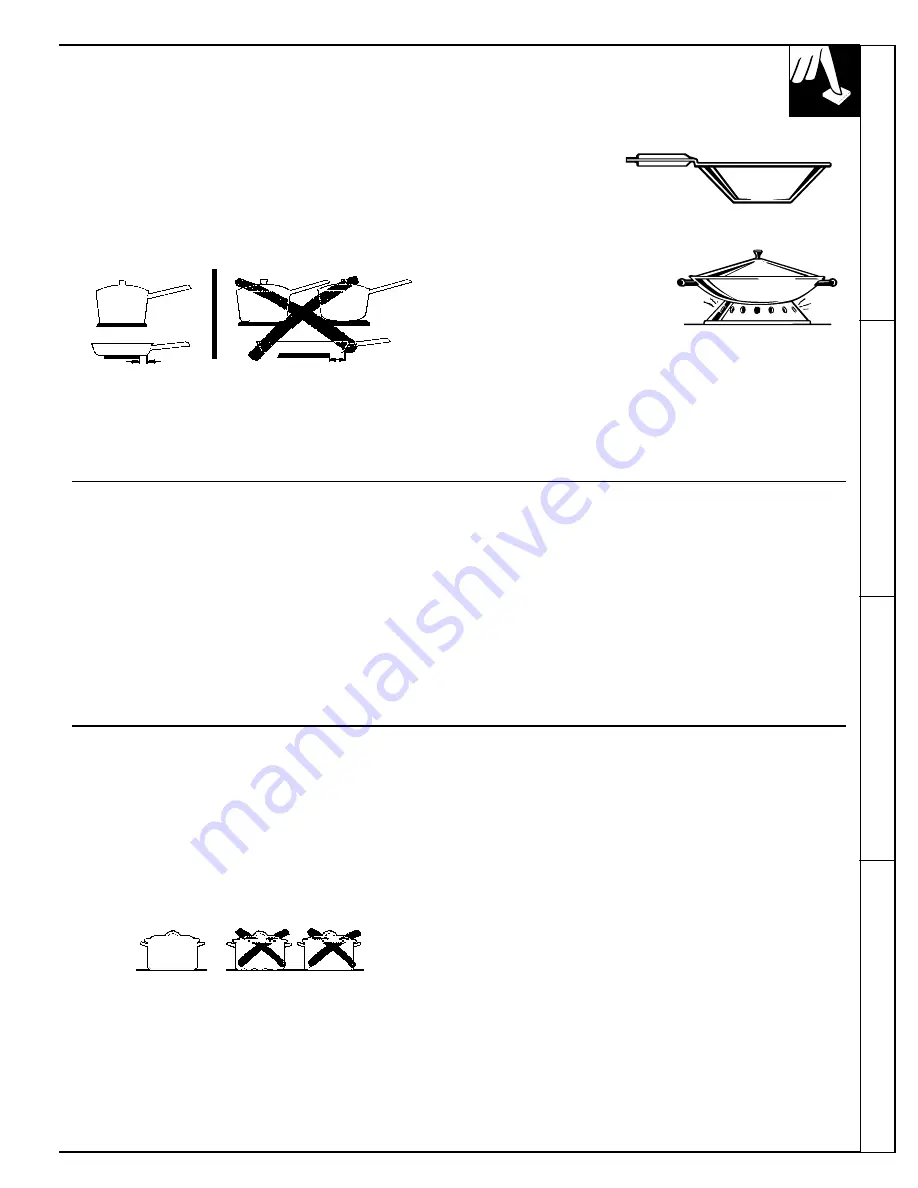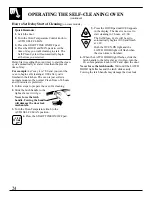
Use medium- or heavy-weight cookware. Aluminum
cookware conducts heat faster than other metals.
Cast-iron and coated cast-iron cookware are slow to
absorb heat, but generally cook evenly at low to
medium heat settings. Steel pans may cook unevenly
if not combined with other metals.
For best cooking results, pans should be flat on the
bottom. Match the size of the saucepan to the size of
the surface unit. The pan should not extend over the
edge of the surface unit more than 1 inch.
We recommend that
you use only a flat-
bottomed wok. They
are available at your
local retail store.
Do not use woks that
have support rings. Use of
these types of woks, with or
without the ring in place,
can be dangerous. Placing
the ring over the surface
unit will cause a build-up
of heat that will damage
the porcelain cooktop.
Do not try to use such woks without the ring.
You could be seriously burned if the wok tipped over.
Do not use woks that have
support rings.
SURFACE COOKWARE TIPS
Cookware
Wok Cooking
Not over 1 inch
RIGHT
WRONG
Over 1 inch
Cooktop Comparison
Surface Contr
ols
Cookwar
e T
ips
Home Canning T
ips
HOME CANNING TIPS
Canning should be done on surface units only.
Pots that extend beyond 1 inch of surface unit’s drip
pan are not recommended for most surface cooking.
However, when canning with water-bath or pressure
canner, larger-diameter pots may be used. This is
because boiling water temperatures (even under
pressure) are not harmful to the cooktop surfaces
surrounding the surface units.
HOWEVER, DO NOT USE LARGE DIAMETER
CANNERS OR OTHER LARGE DIAMETER POTS
FOR FRYING OR BOILING FOODS OTHER THAN
WATER. Most syrup or sauce mixtures—and all types
of frying—cook at temperatures much higher than
boiling water. Such temperatures could eventually harm
the cooktop surfaces surrounding the surface units.
Observe the Following Points in Canning
1. Be sure the canner fits over the center of the
surface unit. If your range or its location does not
allow the canner to be centered on the surface unit,
use smaller diameter pots for good canning results.
2. For best results, use canners with flat bottoms.
Canners with flanged or rippled bottoms (often
found in enamelware) don’t make good contact with
the surface unit and take a long time to boil water.
Flat-bottomed canners are recommended.
3. When canning, use recipes and procedures from
reputable sources. Reliable recipes and procedures
are available from the manufacturer of your canner;
manufacturers of glass jars for canning, such as
Ball and Kerr; and the United States Department of
Agriculture Extension Service.
4. Remember that canning is a process that generates
large amounts of steam. To avoid burns from steam
or heat, be careful when canning.
NOTE: If your house has low voltage, canning may
take longer than expected, even though directions
have been carefully followed.
The process time will be shortened by:
(1) using a pressure canner, and
(2) starting with HOT tap water for fastest heating
of large quantities of water.
9
Содержание Self-Cleaning Electric Range
Страница 37: ...NOTES 37 The Problem Solver...
Страница 38: ...38 NOTES...










































